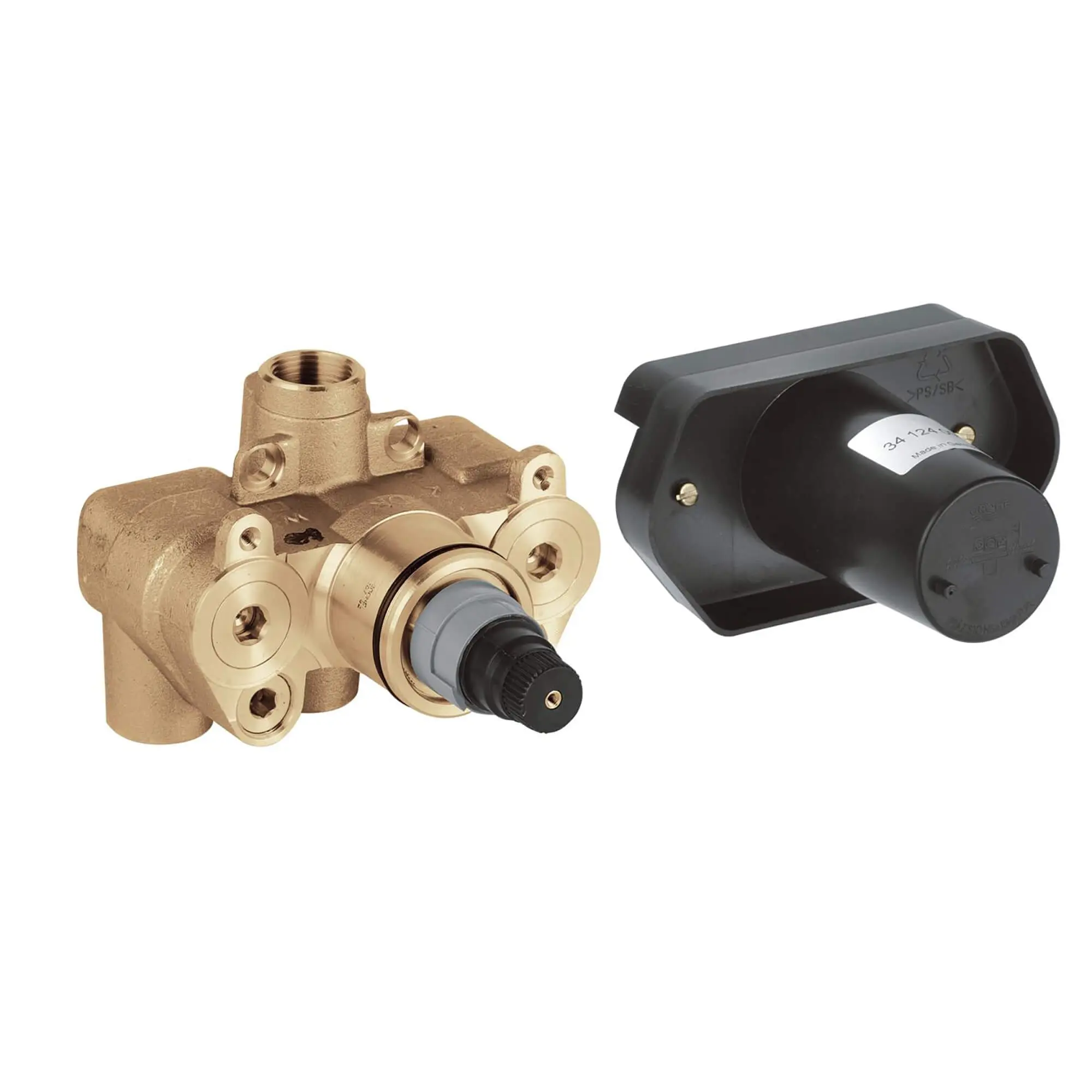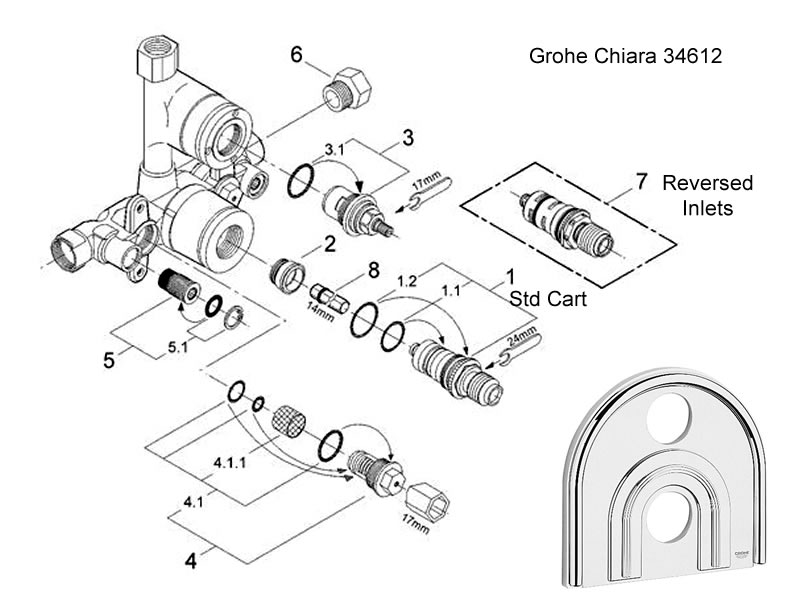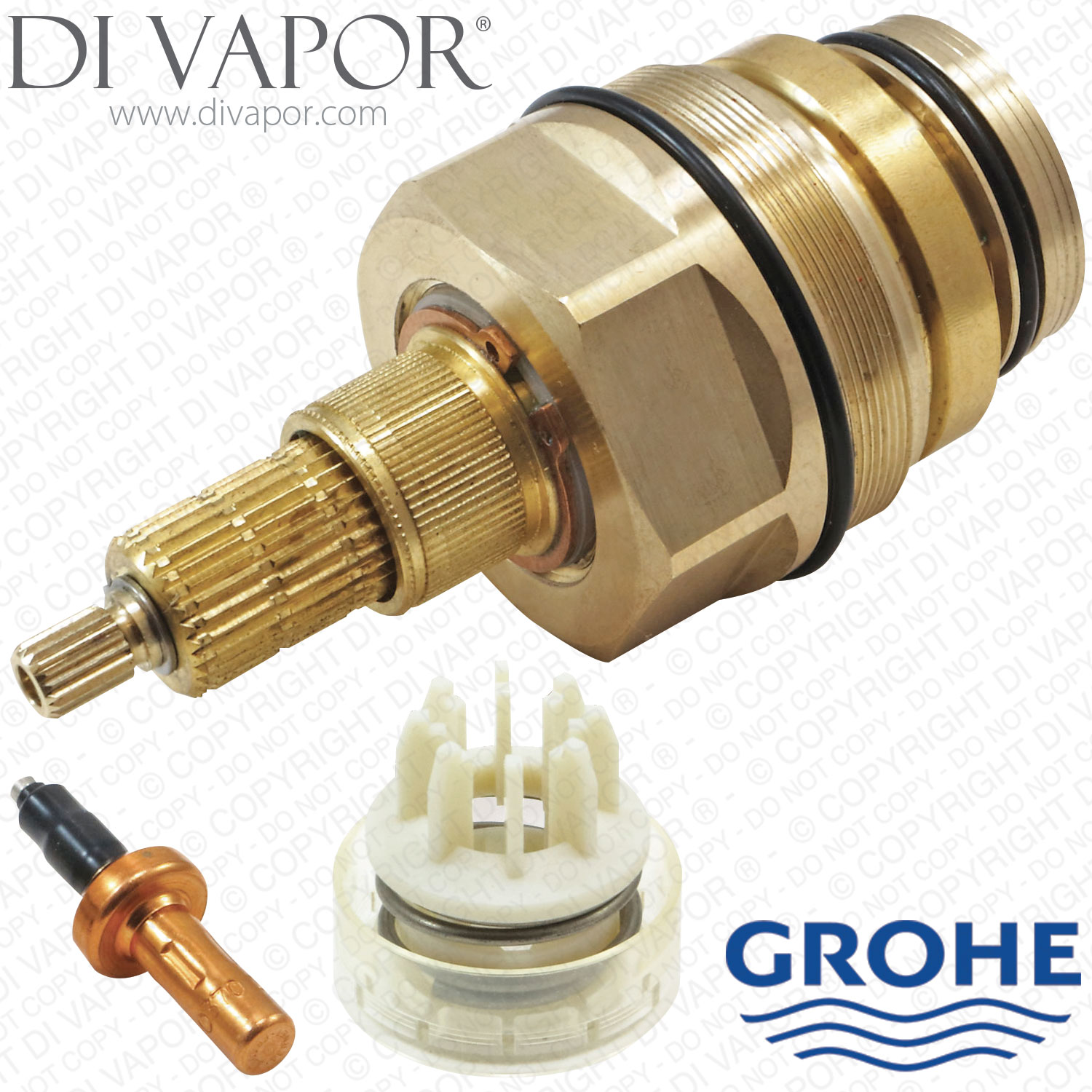Disclosure: This post contains affiliate links and I will be compensated if you make a purchase after clicking through my links. Learn More
Are you tired of dealing with unexpected temperature changes during your relaxing shower? You’re not alone.
Many homeowners face issues with their Grohe thermostatic shower valves, disrupting what should be a soothing experience. Imagine stepping into your shower, expecting a consistent, comfortable temperature, only to be jolted by sudden bursts of hot or cold water. It’s frustrating, isn’t it?
This common problem not only affects your daily routine but can also lead to bigger headaches if left unaddressed. We’ll dive into the reasons behind these pesky problems and offer practical solutions to ensure your shower remains a sanctuary of comfort. Stick around to discover how you can reclaim your perfect shower experience.

Credit: www.grohe.us
Common Issues
Grohe thermostatic shower valves are known for their efficiency. Yet, like any plumbing fixture, they can face common issues. Understanding these can help you maintain a comfortable shower experience.
Temperature Fluctuations
Temperature changes can disrupt a relaxing shower. This issue might arise from a faulty thermostat. It could also be due to mineral buildup in the valve. Regular cleaning can often solve this problem.
Low Water Pressure
Low water pressure can spoil your shower. Sometimes, it’s due to a clogged valve. Sediment buildup often blocks water flow. Cleaning the valve can restore pressure. Another cause might be a blocked pipe. Checking the plumbing system can identify the issue.
Leaking Valve
A leaking valve wastes water. It might result from a worn-out seal. Replacing the seal can fix the leak. Tightening loose connections can also help. Regular checks can prevent future leaks.
Tools And Materials
Addressing issues with your Grohe thermostatic shower valve requires specific tools. Having the right materials on hand ensures a smooth repair process. Proper preparation is key to fixing common valve problems.
Tools Required
Gathering the right tools is essential for any repair. A Phillips screwdriver is necessary for removing screws. A flathead screwdriver helps with prying open parts. Use an adjustable wrench to loosen or tighten nuts. Needle-nose pliers are useful for gripping small components.
Materials Needed
Stocking up on essential materials simplifies the repair. Silicone grease ensures smooth operation and prevents leaks. Replacement cartridges solve issues related to water temperature control. Plumber’s tape seals threaded connections, preventing leaks. Cleaning cloths help maintain a tidy workspace. With these materials, you’re prepared to tackle valve issues efficiently.
Temperature Adjustment
Struggling with temperature fluctuations in your Grohe thermostatic shower valve? This common issue can disrupt your shower experience. Regular maintenance or a professional check can help restore consistent water temperature.
Adjusting the temperature of your Grohe thermostatic shower valve can sometimes feel like a puzzle. Have you ever stepped into the shower expecting a warm embrace, only to be greeted with icy cold or scalding hot water? You’re not alone. Many people struggle with finding that perfect balance.
Understanding the ins and outs of temperature adjustment can save you from those unpleasant surprises and make your daily shower a soothing ritual.
Calibrating The Thermostat
Calibration might sound technical, but it’s quite straightforward. The thermostat in your Grohe shower valve needs to be set accurately to ensure the desired temperature. To start, turn the shower handle to the midpoint position. If the water is not at a comfortable temperature, you might need to adjust the thermostat setting.
Use a screwdriver to remove the handle, revealing the calibration dial. Adjust the dial slightly, testing the water temperature after each adjustment. It’s a bit of trial and error, but patience will pay off. Remember, small adjustments can make a big difference. Have you tried calibrating your thermostat before?
Checking Hot Water Supply
Before you blame the thermostat, consider your hot water supply. Is it consistent throughout your home? If not, your shower might not be the culprit. Check your water heater settings. It should be set to a temperature that provides comfort without risking burns. Inspect for any issues with the hot water flow to your shower.
Sometimes, sediment buildup in pipes can restrict flow, affecting temperature. A simple flush of your water heater can sometimes resolve this issue. Have you inspected your water heater lately? By following these steps, you can better understand and resolve issues with your Grohe thermostatic shower valve. Have you found this information helpful? Feel free to share your experiences or tips in the comments below.

Credit: www.showerspares.com
Improving Water Pressure
Experiencing low water pressure can ruin your shower experience. A Grohe thermostatic shower valve problem might be the cause. Improving water pressure can make your showers more enjoyable. This guide will help you enhance your shower experience.
Cleaning The Shower Head
Minerals can build up in your shower head. This can block water flow. Regular cleaning can help. Remove the shower head and soak it in vinegar. Let it sit for a few hours. Rinse it with clean water. This simple step can boost water pressure. A clean shower head works better.
Inspecting Water Supply Lines
Check the water supply lines for blockages. Blocked lines can reduce water pressure. Turn off the water supply first. Then, inspect the lines for any kinks or clogs. Clear any obstructions you find. Ensure the lines are straight. This can improve water flow to your shower.
Fixing Leaks
Experiencing a leak in your Grohe thermostatic shower valve can be frustrating. It not only wastes water but can also lead to higher water bills. Addressing leaks promptly is crucial. Fortunately, fixing these leaks is straightforward with some basic steps. Proper care ensures your shower functions efficiently.
Tightening Connections
Loose connections often cause leaks. Start by checking all connections for tightness. Use a wrench to gently tighten loose joints. Be careful not to over-tighten. Over-tightening can damage components. Ensure that all parts fit snugly together.
Replacing Seals
Worn-out seals can lead to persistent leaks. Inspect the seals around the valve. If they appear cracked or worn, replace them. First, turn off the water supply. Carefully remove the old seal and install the new one. Ensure the new seal fits properly. Test the valve to confirm the leak is fixed.
Routine Maintenance
Routine maintenance of your Grohe thermostatic shower valve is crucial. It keeps your shower functioning smoothly. Regular care prevents problems and extends its lifespan. Proper upkeep ensures consistent water temperature. This makes your shower experience pleasant every time.
Regular Cleaning
Clean the valve regularly to prevent mineral buildup. Minerals can affect water flow and temperature control. Use a soft cloth and mild cleaner. Avoid harsh chemicals that may damage the valve. Wipe the valve gently to remove any residue. Regular cleaning maintains its efficiency and appearance.
Annual Inspection
Perform an inspection once a year to ensure optimal performance. Check for leaks or unusual sounds. Inspect the valve for signs of wear. Replace worn parts to avoid future issues. Ensure all connections are tight and secure. An annual check can help you catch problems early.
When To Seek Professional Help
Is your Grohe thermostatic shower valve acting up? While minor issues can often be tackled with a bit of DIY enthusiasm, there are times when seeking professional help becomes essential. Understanding when to call in an expert can save you time, frustration, and potentially costly repairs. Let’s dive into the specifics of when professional intervention is your best option.
Persistent Temperature Fluctuations
Are you experiencing unexpected temperature changes during your shower? If adjusting the valve doesn’t stabilize the water temperature, there might be a deeper issue at play. Constant fluctuations can indicate a malfunction in the valve’s internal mechanics, which requires a professional’s touch to resolve.
Unusual Noises
Have you noticed strange noises when using your shower? Whistling or banging sounds could be a sign of pressure issues or a problem with the valve’s installation. These noises might seem harmless, but they often precede more severe damage. A professional plumber can diagnose and fix these issues efficiently.
Leaks And Drips
Is your shower valve leaking? Persistent drips can lead to increased water bills and potential water damage. While tightening loose fittings might be a temporary fix, leaks often indicate worn-out parts or improper installation. A plumber can replace faulty components and ensure a watertight seal.
Difficulty In Valve Operation
Does your valve resist turning or feel stuck? Difficulty in operation can be frustrating, especially when you’re in a hurry. This issue might stem from mineral buildup or internal wear and tear. Don’t force it—doing so could exacerbate the problem. A professional can clean or replace the necessary parts to restore smooth functionality.
Complete Valve Malfunction
Has your valve stopped working entirely? Total failure demands immediate attention. If you’re unable to get any water flow or control temperature, it’s time to call in an expert. A professional can quickly identify the cause and recommend a replacement if necessary.
Ignoring these signs can lead to bigger problems down the road. Have you ever thought about the cost of a major repair versus a minor fix early on? By seeking professional help at the right time, you ensure that your shower remains a sanctuary of relaxation rather than a source of stress. Don’t wait until it’s too late—your comfort and peace of mind depend on it.

Credit: www.divapor.com
Frequently Asked Questions
Why Does My Grohe Thermostatic Valve Not Maintain Temperature?
Temperature fluctuations can occur due to debris or limescale buildup. Cleaning the cartridge may solve this issue.
How Can I Fix A Leaking Grohe Thermostatic Valve?
Check for worn seals or gaskets. Replace them if necessary. Tightening connections may also help stop the leak.
What Causes Low Water Pressure In Grohe Shower Valves?
Low pressure might be caused by clogged filters or blocked pipes. Regular cleaning helps maintain optimal pressure.
Is It Hard To Install A Grohe Thermostatic Valve?
Installation is typically straightforward. Basic plumbing skills are helpful. Professional help is recommended for complex systems.
Final Words
Fixing a Grohe thermostatic shower valve can seem tricky. But with patience, you can solve common issues. Always check for blockages and clean regularly. Ensure correct installation to avoid future problems. Seek professional help if needed. Simple maintenance keeps your shower working well.
Saves time and avoids costly repairs. Enjoy your perfect shower experience every day. Stay informed and proactive. A little effort goes a long way. Keep showers enjoyable and trouble-free.


